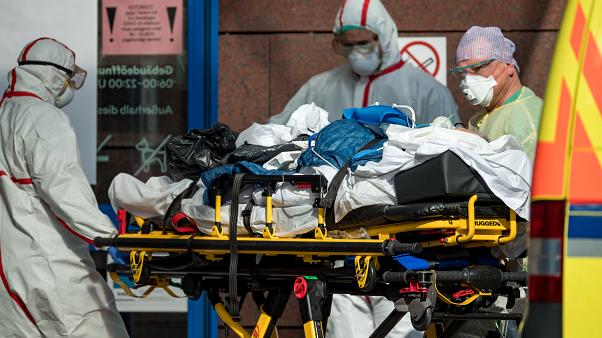
A new study that examines COVID-19 deaths within the US has been published in JAMA (The Peer-reviewed Journal of the American Medical Association). Titled “Excess Deaths From COVID-19 and Other Causes, March-July 2020” and published online on Oct 12, it grants us a very precise window into what has been happening.
Understanding Excess mortality gives a more complete picture of the death toll of coronavirus.
Let’s take a look.
Excess Deaths From COVID-19 and Other Causes, March-July 2020
Previous studies of excess deaths (the gap between observed and expected deaths) during the coronavirus disease 2019 (COVID-19) pandemic found that publicly reported COVID-19 deaths underestimated the full death toll, which includes documented and undocumented deaths from the virus and non–COVID-19 deaths caused by disruptions from the pandemic.
A previous analysis found that COVID-19 was cited in only 65% of excess deaths in the first weeks of the pandemic (March-April 2020); deaths from non–COVID-19 causes (eg, Alzheimer disease, diabetes, heart disease) increased sharply in 5 states with the most COVID-19 deaths.
This study updates through August 1, 2020, the estimate of excess deaths and explores temporal relationships with state reopenings (lifting of coronavirus restrictions).
What is their data source?
Death data for 2014-2020 and population counts for the 50 states and the District of Columbia were obtained from the National Center for Health Statistics and US Census Bureau, respectively. Death counts from March 1, 2020, through August 1, 2020, were taken from provisional, unweighted data released on September 9, 2020. Connecticut and North Carolina were excluded due to missing data.
They used a model to predict expected deaths based on historic norms.
What did they find?
- Between March 1 and August 1, 2020, 1,336,561 deaths occurred in the US. That is a 20% increase over expected deaths (1,111,031)
- The 10 states with the highest excess deaths were … New York, New Jersey, Massachusetts, Louisiana, Arizona, Mississippi, Maryland, Delaware, Rhode Island, and Michigan.
Three states with the highest death rates (New Jersey, New York, and Massachusetts) accounted for 30% of US excess deaths but had the shortest epidemics ( < 10 weeks). States that experienced acute surges in April (and reopened later) had shorter epidemics that returned to baseline in May, whereas states that reopened earlier experienced more protracted increases in excess deaths that extended into the summer.
Of the 225,530 excess deaths, 150,541 (67%) were attributed to COVID-19. Analyses revealed an increase in deaths attributed to causes other than COVID-19, with 2 reaching statistical significance.
This is all very stark – Behind the numbers is a huge human cost
These deaths far exceed the number of US deaths from some armed conflicts, such as the Korean War and the Vietnam War, and deaths from the 2009 H1N1 (Swine flu) pandemic, and approach the number of deaths from World War II.
It is critical to consider that for every death, an estimated 9 family members are affected, such as with prolonged grief or symptoms of posttraumatic stress disorder. In other words, approximately 3.5 million people could develop major mental health needs. This does not account for the thousands of health care workers in hospitals and nursing homes who have been witness to the unimaginable morbidity and mortality associated with COVID-19.
The COVID-19 pandemic represents the greatest threat to prosperity and well-being that the US has encountered since the Great Depression that began in 1929. The authors estimated the total financial cost of the pandemic—related to lost economic output and losses related to health—at $16 trillion, or approximately 90% of the annual US gross domestic product (GDP). The estimated economic loss from COVID-19 is a staggering number, but was largely preventable, and will reverberate through society for years to come.
Few people will forget the Great Pandemic of 2020, where and how they lived, how it substantially changed their lives, and for many, the profound human toll it has taken.
